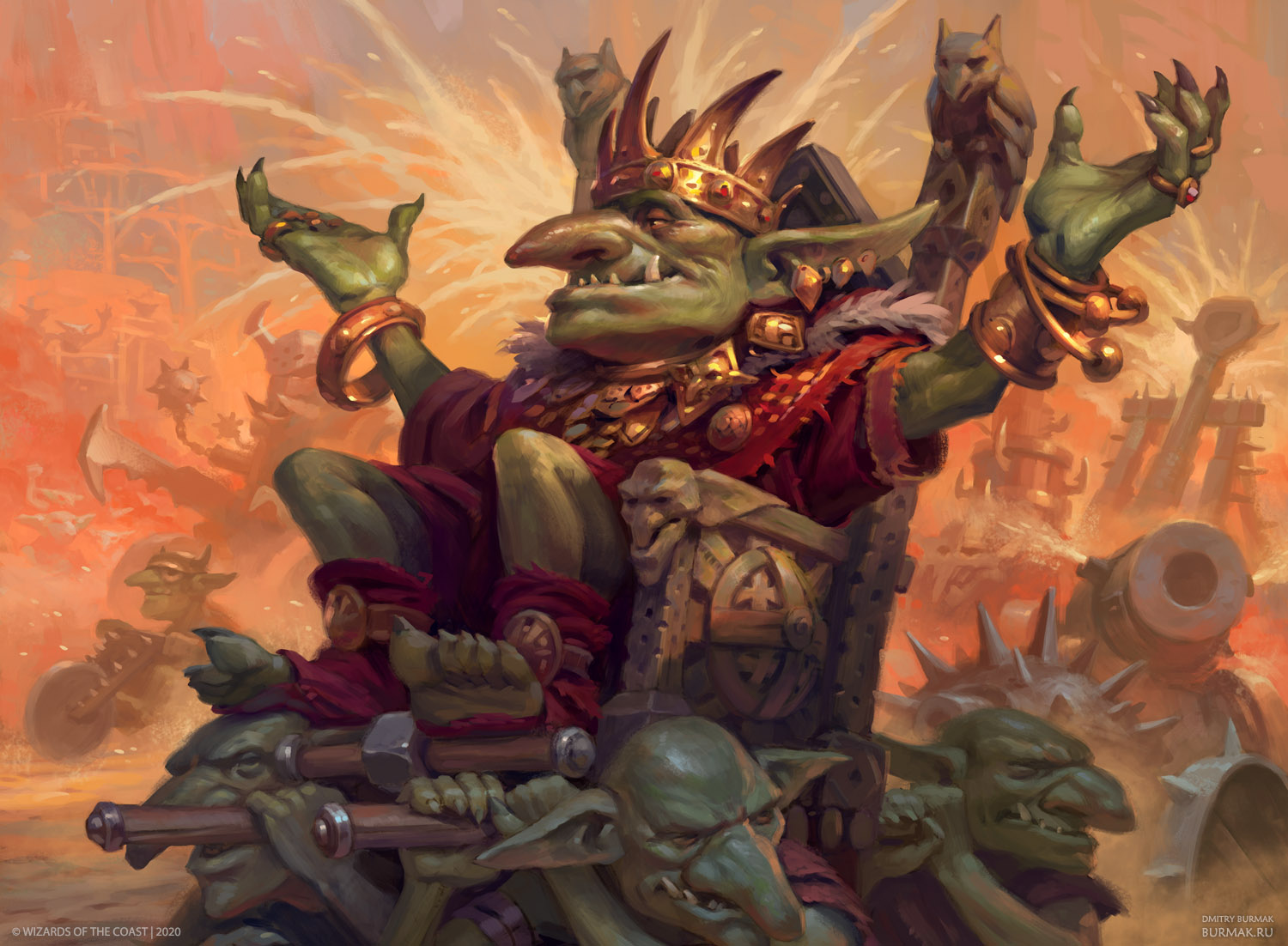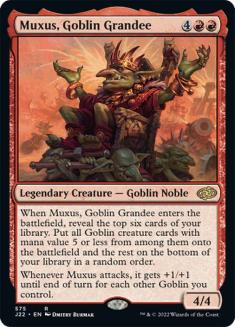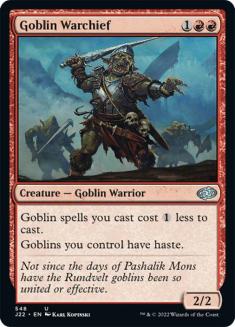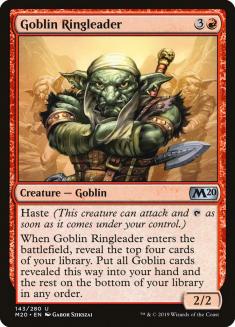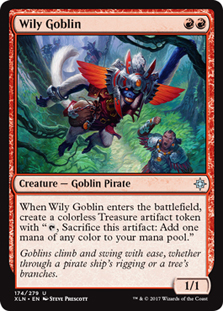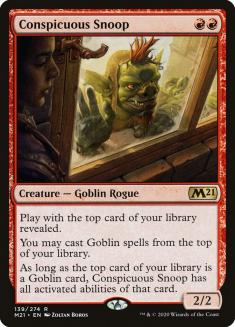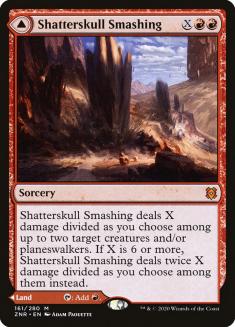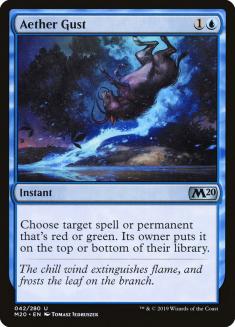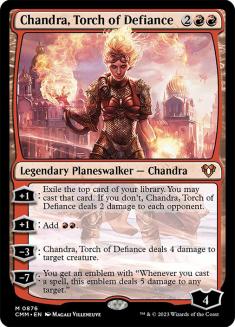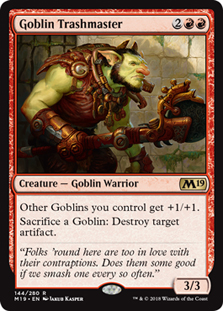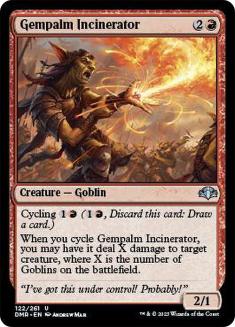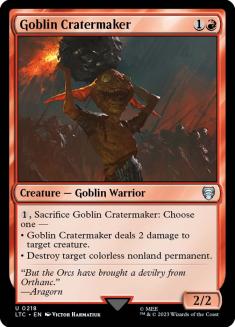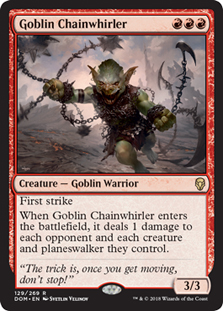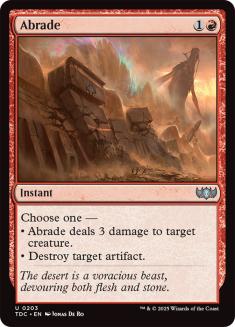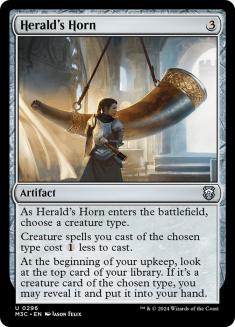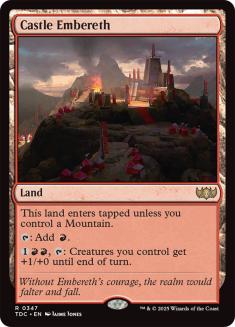Historic has gone through some serious shifting over the last week. The release of Kaladesh Remastered has led to some cool new decks and existing archetypes getting some solid boosts. So far, the biggest winner seems to be Sultai Midrange, but its existence at the top will likely have significant implications on what other decks are viable in the future.
The prospect of fighting through removal, Thoughtseize, and Uro, Titan of Nature’s Wrath is not enviable. It requires sheer force of will or an incredible amount of finesse. The interactive elements of Sultai Midrange are the part that makes it tick, with Uro, Titan of Nature’s Wrath just being the best possible payoff for a deck that likes to slow the game down. Nissa, Who Shakes the World is another story entirely, but tracks as one of the most disgusting win conditions ever printed, akin to Mirari’s Wake but actually ends the game and/or pressures opposing planeswalkers.
With that said, the format is relatively diverse. This past weekend’s SCG Tour Online $5K Kaldeim Championship Qualifier showcased a number of playable archetypes, including a resurgence in one of my old favorites.
Crocodile Grandee
Outside of the nonsense that is Muxus, Goblin Grandee, Goblins is actually a pretty fair and fun deck. There’s been this weird fixation on the six-mana slot over the last few years where their major function is “win the game,” but usually requires building your entire archetype around it. Bolas’s Citadel does something similar but isn’t great if you’re low on life. All that Muxus requires is your absolute devotion to the cause: squishy gobbos.
Everyone who’s played with or against Muxus understands exactly what the card does and is about. If it resolves fast enough, the game usually ends because it generally hits 3+ Goblins, occasionally gives them all haste, and provides some absurd value thanks to Goblin Matron and friends. Even if the first Muxus doesn’t win the game, it will often help find a second, third, or just a slew of Goblin friends to claw your way to the finish line.
One of the easiest ways to fight Muxus is with counterspells, but specificially Aether Gust. A rise in popularity of Aether Gust out of Sultai Midrange has resulted in a downslope in popularity of Goblins, but that in turn can punish the Sultai players. A ton of archetypes showed up this past weekend and didn’t feature a single green or red card, effectively invalidating one of their premier interactive pieces. If that trend continues, I fully expect Goblins to be back at the forefront. At the moment, I consider it to be “extremely powerful but slightly below expectations due to a sideboard card seeing maindeck play because it’s absurdly powerful and I wish it didn’t exist.”
As far as general vibes go, Goblins is pretty strong against spot removal and relatively weak against counterspells and sweepers. Counterspells are significant because your main gameplan involves resolving a four or six-drop, as Krenko and Muxus are your two strongest finishers. Sweeper effects mean your smaller drops don’t do as much, and a single card can wipe out a chunk of your squad. The trick is making sure you have a powerful followup, but that isn’t always possible.
The Mono-Red version deals you less damage and is a bit more consistent with untapped lands, but the secondary color splash of blue for Negate is almost free. With so many untapped two-color lands that don’t even deal you that much damage, and virtually never enter the battlefield tapped, the only argument against splashing blue is that Negate isn’t a necessary inclusion into the archetype. The first iteration of the deck I played was Mono-Red, but it was not very hard to get me to switch to Izzet, simply because I didn’t really think my sideboard offered enough help.
Shoutout to Scooter222 for the original list, which I used to go 4-2 in a qualifier without having cast Muxus before the event.
Creatures (33)
- 4 Goblin Matron
- 4 Goblin Warchief
- 4 Skirk Prospector
- 4 Goblin Chieftain
- 4 Krenko, Mob Boss
- 4 Wily Goblin
- 1 Goblin Cratermaker
- 4 Conspicuous Snoop
- 4 Muxus, Goblin Grandee
Lands (5)
Spells (22)

I want to talk about a few specific cards from this list, including what impressed me and which cards were letdowns. Overall, the deck felt powerful, with my only losses coming from some serious misplays and my other getting absolutely blasted by Sultai Midrange going Nissa, Who Shakes the World into Aether Gust.
The first instinct I had when playing the deck was that Goblin Warchief was one of the worst cards in the deck, if not the actual worst. The effect of giving all your creatures haste has significant value in tandem with Muxus but outside of that it feels very overcosted. I sideboard it out regularly and might be digging for a build that doesn’t play it at all.
I’ve played Goblins in multiple formats over the last two decades. Goblin Warchief was one of the coolest Goblins ever printed, as giving your little guys haste was just busted. With Goblin Chieftain in the mix, having eight of that effect is a little overkill, and I value the buff effect much higher than the cost reduction as it leads to more games being won without casting Muxus.
Another all-star turned benchwarmer, Goblin Ringleader is somewhat mediocre in this environment. It’s mostly due to the irrelevance of actual card advantage, as cards that generally gain card advantage do so in large swaths instead of small increments. Because of that, traditional resource battles revolving around spot removal and sweepers aren’t as common. Instead, we get a few pieces of removal followed by an Uro or Nissa or some other planeswalker that buries the opponent with 1-2 cards worth of advantage every turn for zero mana. We can’t fight them in the same way we used to because their finishers aren’t slow. They don’t give us time to recover. Since our deck is built around Muxus, the only way to fight them is to go way under or way over them. Our cheap creatures can naturally go under them on occasion if they don’t draw a sweeper, and Muxus can go over the top if they don’t draw Aether Gust. The games where neither of these things happen are usually the ones where you lose.
A creature that was mediocre when it was in Standard, it shines in this archetype specifically because its effect is unique when combined with its creature type. Wily Goblin accelerates you into Muxus, which in turn helps catch up for how weak it is on its face. Getting to Muxus faster is huge because of how powerful it is, and Wily Goblin is just another cog in the machine. I’d play eight of them if I could. It’s excellent.
I was originally low on this card but I might be coming back around. If the format is highly interactive, Conspicuous Snoop can generate some much needed pressure without exposing yourself too much to a sweeper. You don’t hit Krenko, Mob Boss on top of your deck too often, but just being able to play a Goblin or three without playing cards from hand is pretty sick. Since you want to play so many mana sources to curve into Muxus, having a card that singlehandedly allows you to cast a bunch of creatures from the top of your deck is huge.
I’m thinking of playing four of these with like 24 regular lands because I never want to miss land drops and this card is actually bonkers on occasion with Skirk Prospector. It overperformed. There are also very few aggro decks in Historic, which means dealing yourself damage to play it untapped is rarely a downside. If Mono-Black Aggro or Mono-Red Aggro gain some popularity, playing four of these is no longer free, but right now its pretty great as a topdeck and not so bad as an early land.
The Verdict
Mono-Red Goblins is powerful and very consistent. Playing more lands to curve out with Muxus is important, but making sure you give yourself flood protection with Conspicuous Snoop and Shatterskull Smashing is pretty important. I found myself feeling like most of my sideboard was wasted space, so I looked to find a splash that made sense. The following list is what I played in the SCG Tour Online $5K Kaldeim Championship Qualifier after seeing a list splashing blue went 6-0 in a previous satellite.
Creatures (33)
- 4 Goblin Matron
- 4 Goblin Warchief
- 1 Gempalm Incinerator
- 4 Skirk Prospector
- 4 Goblin Chieftain
- 4 Krenko, Mob Boss
- 4 Wily Goblin
- 4 Goblin Instigator
- 4 Muxus, Goblin Grandee
Lands (13)
Spells (14)

This card is singlehandedly the reason to splash blue. For your tougher matchups featuring sweepers and such, a Negate in the right spot will bury your opponent. Fizzling their sweeper or planeswalker in a tight spot will occasionally just steal it from your opponent. In matchups where Goblins aren’t naturally favored, a single Negate can turn the corner. And since we’ve already discussed how free the splash is thanks to the addition of Riverglide Pathway, it’s safe to assume that this splash is necessary and worthwhile.
Not sold that this one is worth it yet, but it’s excellent against the mirror, variations of Mono-Green, and the occasional Mono-Red beatdown strategy. Aether Gust is an all-star in some midrange or control decks, so having access to it here probably isn’t so bad, but I think we might need to look elsewhere and just slam four copies of Negate and call it a day.
I haven’t had a lot of great experiences with this one yet, but I certainly know how powerful the pivot from “all creatures, all the time” to a sideswipe planeswalker can be. An opponent focused on killing a bunch of creatures might have a little trouble beating a Chandra, Torch of Defiance. The card advantage, mana, and ultimate are all in play here, so I’m loathe to trim any and I’ve seen a lot of people play them maindeck. I wouldn’t be surprised if this one becomes stock as a two-of in the maindeck because of how hard it is to interact with considering removal like Vraska’s Contempt is unplayable and Assassin’s Trophy is horrific against you.
I’ve seen almost every list of Goblins play one of each of these cards, and I feel no ill will toward any of them. Having access to a slew of one-of creatures with Goblin Matron is quite nice, and especially so when multiples of those creatures can handle your worst nightmare: Grafdigger’s Cage. Whether you put them in your sideboard or maindeck should be entirely dependent on how good they are against the average opponent, or how necessary their ability is to win games, or even just the frequency of searching them up via Goblin Matron.
I don’t love Abrade. I might rather play a ton Goblin Cratermakers instead, but the correct answer is likely something like two or three of these because they’re so versatile. At the moment, Historic events are only happening online, and many of those events are open decklists, so the times where you bring in Abrade should be when:
- They have a ton of creatures that need killing
- They have a bunch of Grafdigger’s Cage
- They have a bunch of artifacts as a central theme
After cutting Conspicuous Snoop from the original version, I’m definitely adding them back into the mix. I flooded out a bit while playing the Izzet version, and having that extra way to generate some extra cards is certainly helpful in alleviating that. I don’t want to completely erase Goblin Instigator as it played quite well in the archetype, allowing for faster copies of Muxus and a lot of fodder for Skirk Prospector in weird spots. Instead, I’m going to shave on Goblin Warchief and try to find a nice middle ground.
Creatures (33)
- 4 Goblin Matron
- 2 Goblin Warchief
- 1 Gempalm Incinerator
- 4 Skirk Prospector
- 4 Goblin Chieftain
- 4 Krenko, Mob Boss
- 4 Wily Goblin
- 2 Goblin Instigator
- 4 Conspicuous Snoop
- 4 Muxus, Goblin Grandee
Lands (13)
Spells (14)

I very much underestimated this card at first glance. There’s a lot to love about a card like Herald’s Horn in a matchup where your opponent continuously sweeps and/or uses spot removal to kill your creatures. Alongside Chandra, Torch of Defiance and Negate, you have a fairly strong anti-control sideboard plan. It’s not foolproof and will cause your Muxus to be worse, but hitting them at multiple angles is huge.
Many of the Mono-Red versions have moved toward three or four copies of this card, but the blue splash does take away a few Mountains from the build, making them a bit worse. Having your lands enter the battlefield forcibly tapped, ever, is a death sentence for this deck. It might not be possible to miss on casting Muxus, but not being able to play your two-drop or Krenko on curve is a nightmare I don’t wish on anyone.
With that said, Castle Embereth is THE reason to play a Mono-Red version of Goblins. It’s excellent, and gives you a much-needed punch when you don’t draw or can’t cast Muxus. It gets even better when you incorporate Goblin Instigator into the strategy. We can only afford a few copies here, but I’m glad to have it.
An Aside on Splashing Blue
Overall, I have to say that the blue splash for just Negate feels a little weird, but the holes that a card like Negate shores up in your overall gameplan are just too important. I felt like I was playing unloseable games when I drew Negate. I haven’t felt like that in a long time from a simple sideboard Negate, but the added dimension is exactly the type of effect that Goblins needs. In time, I might find another blue card or two that fits into the gameplan, but only having to play ten sources of blue is nice and I rarely feel like I’m punished for doing it. Adding more blue cards requires more blue mana, which might make me start to regret the blue splash in time.
The big story here is that Mono-Red Goblins didn’t feel exceptional. It felt powerful, proactive, and offered exactly what was advertised. I still felt like a huge underdog in some matchups/spots just because I wasn’t fast enough, consistent enough, or able to recover from certain spells my opponent played. Almost all of those spells were four or more mana and a non-creature, so Negate was a perfect foil for their plans.
Perhaps the right play is three Negate and something like two Spell Pierce, but I’ve never been a big fan of Spell Pierce outside of a handful of formats and decks. Sure, the card is great at times, but the games where it becomes useless are so disgusting, and I find it more likely you’ll win games by hitting your opponent with a weird permanent they aren’t expecting. Herald’s Horn and Chandra, Torch of Defiance are great at doing exactly that. In conjuction with Negate, you should be able to keep up pretty easily with anyone trying to grind you out.
If you’re looking for a fun format to try, I highly recommend Historic. It’s currently in its infancy, and their management of the format has been swift and effective. If there ever is a card that gets out of hand, they’re very willing to put it on the ban list. There are some absolute bangers in Historic as far as power level is concerned, including Muxus and Uro, but the range of playable archetypes keeps the format feeling healthy. At the moment, Sultai Midrange is one of the most popular archetypes in tournament play, but I’m actually pretty happy with the gameplay patterns.
If you are a competitive player, like me, I highly recommend trying out the SCG Tour Online events. They’re a great way to hone your skills and compete for big prizes. Also shoutout to MTGMelee for being the goat tournament platform.

